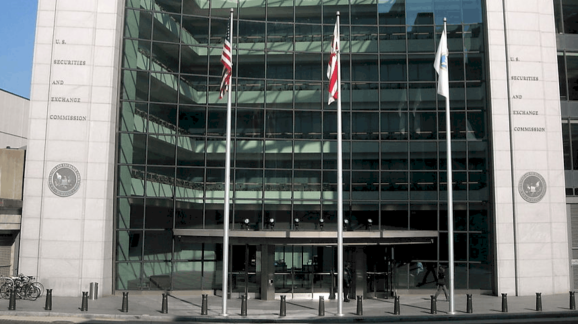The CAT’s nine lives could be up

The 11th Circuit Court of Appeals recently vacated a funding proposal for the Securities and Exchange Commission’s (SEC) largest regulatory program to date. Known as the Consolidated Audit Trail (CAT), this system would have created the largest database in federal government history, capable of tracking every stock trade in the nation. If fully adopted, the CAT would have been integrated across the quasi-governmental oversight rules of 25 different stock exchanges.
These exchanges, known as self-regulatory organizations (SROs), would upload investor data and financial transactions to the CAT. SROs were also expected to report any nefarious activity detected by CAT to the Financial Industry Regulatory Authority (FINRA), the SEC’s chief enforcer.
The CAT was proposed to prevent a repeat of the 2010 “Flash Crash.” In response, the SEC relied on a pre-existing framework from the 2005 Regulation NMS to pass Rule 613 in 2012. Regulation NMS is regulatory framework for restructuring the equities market that was intended to spur competition across the stock exchanges. Rule 613 formally authorizes the CAT to be integrated as part of an NMS plan for FINRA and SROs to enforce.
However, the CAT was not officially finalized until 12 years later in May 2024. The Flash Crash led to the second greatest and short-lived stock market decline in recent history, marked by a rapid drop in stock indices followed by an equally rapid rebound.
The idea of a mass-surveillance system of financial transactions dates back over 40 years before the CAT was proposed, to former SEC Chair William J. Casey. During World War II, Casey served as high-ranking spy in the Office of Strategic Services, a precursor to the CIA. He led intelligence operations throughout Europe, later being appointed as the Director of the CIA by President Reagan.
Naturally, the CAT represented the modern embodiment of Casey’s Orwellian vision of an all-knowing, all-seeing SEC capable of spying on every financial trade action in America. According to an SEC policy statement in 1972, Casey’s primary focus was to create a centralized, electronically linked market system, allowing the federal government to surveil, record, and report all financial transactions. The SEC sought to “bring all offers and bids together into a single nationwide market system, by making quotations and transactions known in all parts of the country.”
Despite Casey’s lofty dream, the grim reality is that the CAT was a ticking time bomb for data exposure. The CAT would have significantly increased the risk of financial data breaches both from domestic cyber criminals and countries like China, according to former Attorney General Bill Barr. Additionally, the CAT would have jeopardized an investor’s Fourth Amendment right to privacy as alleged in legal challenges to the system by organizations like the New Civil Liberties Alliance and the National Center for Public Policy Research.
Under former Chair Gary Gensler, Casey’s vision was nearly realized. Gensler’s SEC used a “whole-of-government” approach to approve the CAT in 2024, requiring 25 SROs to fully integrate CAT fees and monitoring requirements across their exchanges. This mandate would unify CAT reporting and data collection activities across each SRO under the guidance of FINRA’s heavy-handed enforcement. Such top-down regulation from the SEC undermines the original intent of self-regulation in US financial markets.
Since its unveiling, the CAT has been plagued by multiple setbacks and internal inconsistencies about how to sustain such a costly and data-heavy system.
Thankfully, the 11th Circuit spared the public from what would likely have been a wave of data breaches, identity thefts, Big Brother-style surveillance, and invasive enforcement of the CAT. The SEC failed to justify the CAT’s massive regulatory costs that appeared to balloon in size year after year. SEC commissioners were incapable of dividing up the CAT’s cost burdens equally among industry professionals.
One agency estimate found that the SEC would need to come up $2.4 billion just to launch the CAT. Aside from the massive cost of bringing the database online, annual reporting was estimated to cost $1.7 billion. The 11th Circuit even noted that the Commission’s projected implementation costs exceeded original estimates eight times over.
And herein lies the central reason why the court vacated the CAT rule: the SEC expected broker-dealers to foot the entire bill for the SEC’s surveillance apparatus. This blatant unfairness was deemed to be arbitrary and capricious since, without explanation, it shifted the burden of paying for the CAT entirely to broker-dealers, who are merely financial intermediaries.
Originally, the SEC sought to reassure critics that the CAT funding would be based on cost-sharing between SROs and broker-dealers. Specifically, 2/3 of the cost burden would fall onto financial brokers, equating to $140 million of CAT’s $200 million yearly budget.
However, the Commission decided in 2023 to allow SROs to defray or pass on the costs of implementing the CAT fully onto broker-dealers. The SEC never came to terms with the sheer unworkability of the CAT and instead allowed SROs to disseminate the $500 million upfront cost and the subsequent $200 million annual costs to broker-dealers.
This irrational and reckless move provided the court with ample grounds to vacate the CAT funding mandate as arbitrary and capricious. The 11th Circuit’s decision unfortunately leaves the CAT’s regulatory framework intact, sending it back to the SEC for reconsideration of its economic analysis.
SEC Chair Paul Atkins should initiate plans to fully terminate the CAT in light of the 11th Circuit’s decision. This proposed database remains far too dangerous and untenable to manage, with far worse consequences in store for SROs and financially exposed investors.
The proper course of action would be to rescind Rule 613 and halt any further plans to develop the CAT. SROs should not be conscripted as tools of a whole-of-government stock market surveillance regime. It’s time to end this sinister mandate once and for all and restore investor confidence in a safe and secure marketplace.